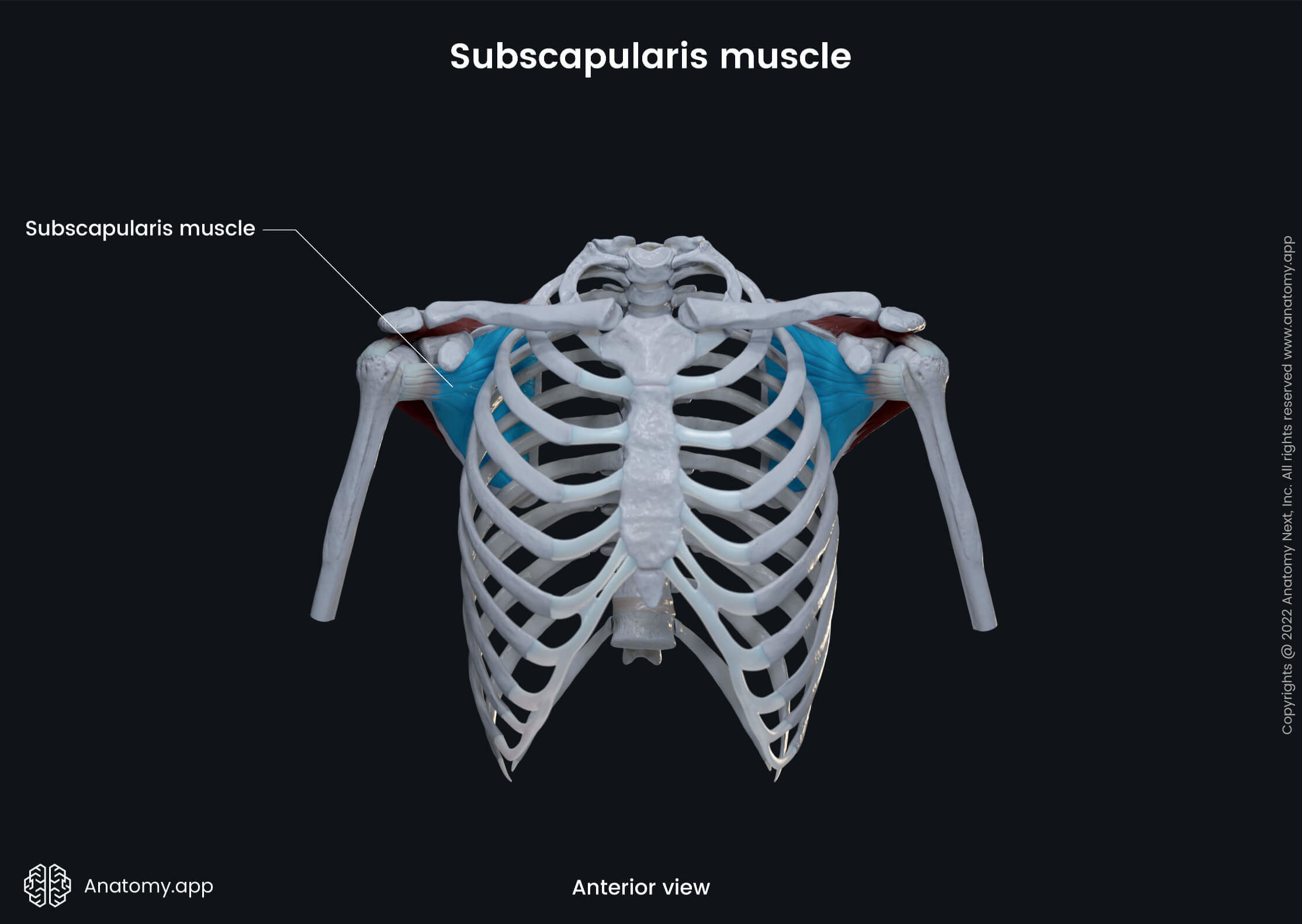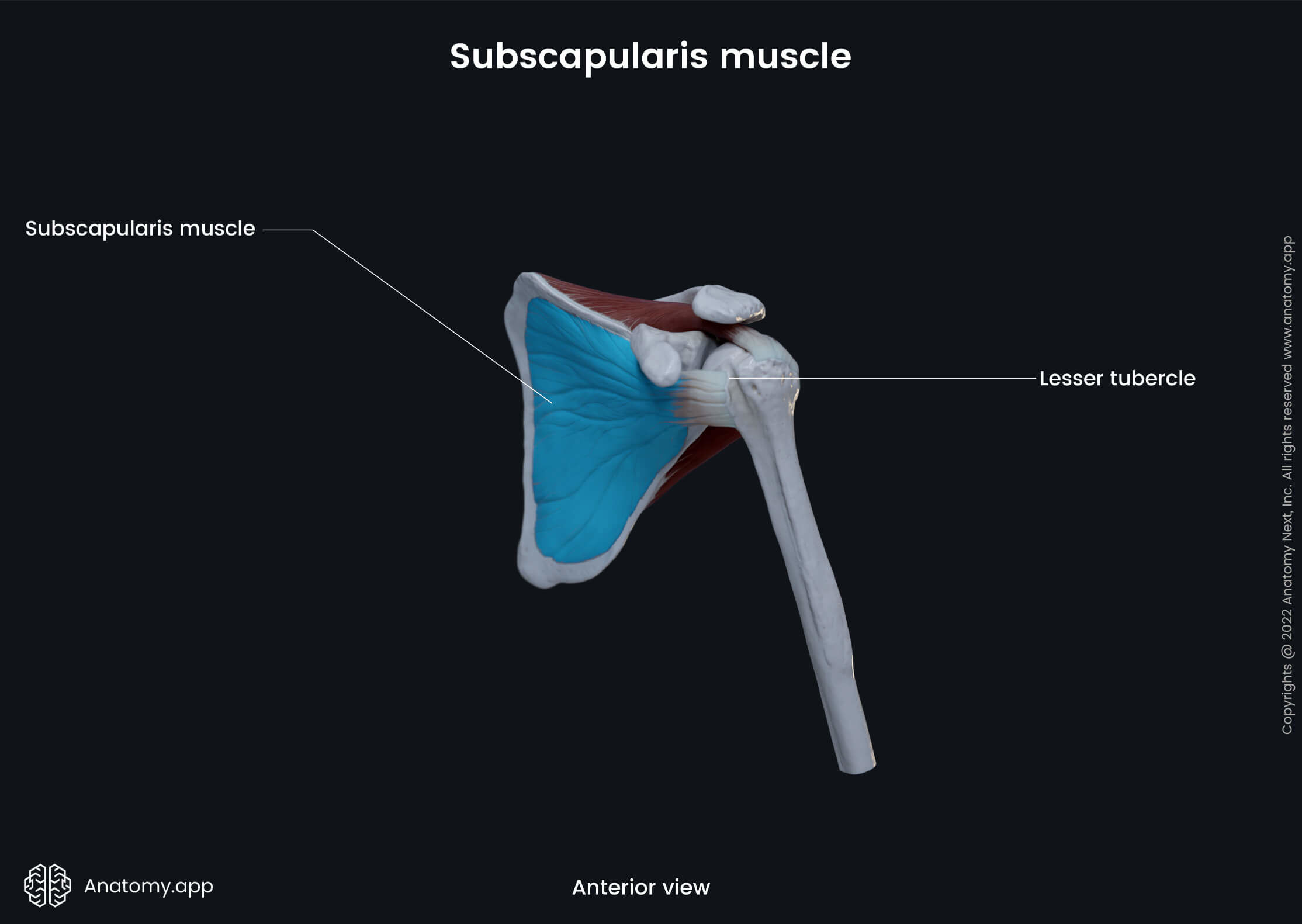- Anatomical terminology
- Skeletal system
- Joints
- Muscles
- Head muscles
- Neck muscles
- Muscles of upper limb
- Muscles of pectoral girdle
- Muscles of shoulder region
- Muscles of upper arm
- Muscles of forearm
- Muscles of hand
- Thoracic muscles
- Muscles of back
- Muscles of lower limb
- Heart
- Blood vessels
- Lymphatic system
- Nervous system
- Respiratory system
- Digestive system
- Urinary system
- Female reproductive system
- Male reproductive system
- Endocrine glands
- Eye
- Ear
Subscapularis
The subscapularis (Latin: musculus subscapularis) is a large flat, triangular-shaped muscle of the upper limb. It stretches between the scapula and humerus, and it is one of the muscles of the shoulder girdle. Together with the supraspinatus, infraspinatus and teres minor muscles, it is classified as the rotator cuff muscle. The subscapularis is the largest and strongest of the rotator cuff muscles. Rotator cuff muscles act together to stabilize the glenohumeral (shoulder) joint during movements of the arm.
| Subscapularis | |
| Origin | Subscapular fossa of scapula |
| Insertion | Lesser tubercle of humerus |
| Action | Shoulder joint stabilization, internal rotation and adduction of arm |
| Innervation | Subscapular nerves (C5 - C6) |
| Blood supply | Suprascapular and subscapular arteries |

Origin
The subscapularis muscle originates from the subscapular fossa found on the costal (anterior) surface of the scapula.

Insertion
The subscapularis fills the subscapular fossa, passes in the lateral direction and inserts on the lesser tubercle of the humerus.
Action
The subscapularis muscle stabilizes the glenohumeral (shoulder) joint and provides adduction and internal (medial) rotation of the arm.
Innervation
The subscapularis is innervated by the upper and lower subscapular nerves (C5 - C6) that arise from the brachial plexus.
Blood supply
The arterial blood supply to the subscapularis muscle is primarily provided by the subscapular and suprascapular arteries. The first artery is a branch of the axillary artery, while the latter comes from the thyrocervical trunk.